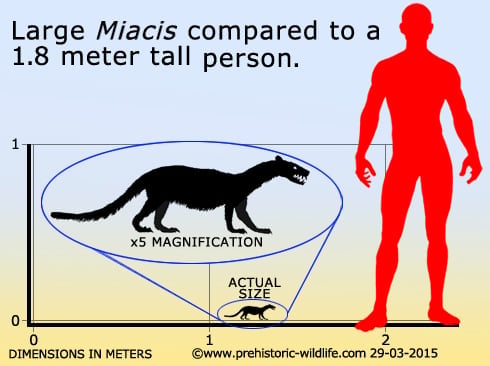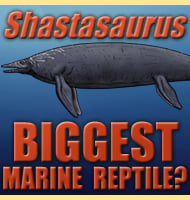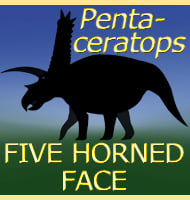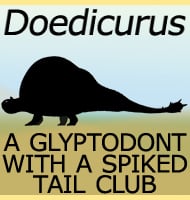In Depth
Miacis is often heralded as being the progenitor of the Carnivora, one of the main groups of carnivorous mammals that today include predators such as big cats, wolves and mustelids among others. However most of the known species of Miacis are considered to actually be members of the Carnivoramorpha, a group of predator mammals that the Carnivora are descended from, but containing animals that that do not show off of their hall marks. One reason why most of the species of Miacis are not fully included with the Carnivora is because they have forty-four teeth, whereas most modern members of the Carnivora have around thirty or even less teeth in some cases.
However despite most of the species being classed as close to true members of the Carnivora, one species called M. cognitus is actually considered by many to be a true member of the Carnivora. Although only based upon a skull, M. cognitus is the first (and so far only known) species that shows a reduction in size for the anterior premolars as well as the places for two teeth, giving the living animal forty-two instead of the forty-four teeth that are seen in other Miacis species. This means that unlike the other species, M. cognitus displays the beginnings of dental features that would become recognisable traits in future members of the Carnivora.
More complete specimens have led to the now commonplace analogy of Miacis being similar to a pine martin (Martes martes). Although generally much smaller than a pine martin, Miacis does have a similar low slung body with well-developed fore quarters, particularly the shoulders and leg joints that would help Miacis to climb up trees. As such Miacis is seen as an arboreal predator, which means that it hunted up in the tree canopy for animals like other small mammals and birds. Miacis may have also raided nests, eating eggs and chicks of birds, and the still developing young of other arboreal mammals. While in the tree canopy Miacis would have been the top predator in the habitat, however Miacis would periodically have to move around on the forest floor, possibly to hunt, expand into new areas and even drink. While on the floor Miacis would have been in danger itself from creodont mammals like the smaller species of Hyaenodon that would have enjoyed a quick Miacis sized snack.
Further Reading
– Third account of new Vertebrata from the Bridger Eocene of Wyoming Valley. – Proceedings of the American Philosophical Society (separate) 1-4. – Edward Drinker Cope – 1872. – Systematics of Early Eocene Miacidae (Mammalia, Carnivora) in the Clark’s Fork Basin, Wyoming. Contributions from the Museum of Paleontology, University of Michigan 26(10):197-225. – P. D. Gingerich – 1983. – Carnivorous mammals of the Late Eocene and Early Oligocene of Trans-Pecos Texas. Texas Memorial Museum Bulletin 33:1-66. – E. P. Gustafson – 1986.- Earliest Eocene Miacidae (Mammalia: Carnivora) from northwestern Wyoming. – Journal of Paleontology. 82 (1): 154–162. – Ronald E. Heinrich, Suzanne G. Strait & Peter Houde – 2016










